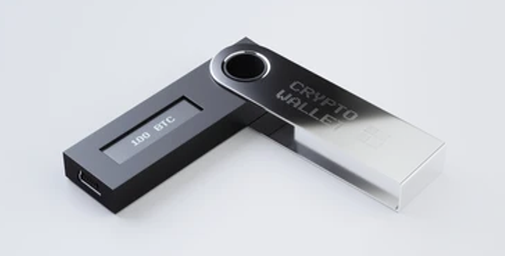Accredited InvestorsAltcoinAnatoli UnitskyAnti-Money Laundering (AML) In CryptoAPIArbitrageArtCoin TokenArticle DirectoryASICAuction Terminology GlossaryBasics of Stock Market InvestingBear MarketBest Crypto Payment Provider In the WorldBitcoinBlockchainBlockchain ConfirmationBlockchain Consensus MechanismBlockchain ForkBlockchain GlossaryBored Ape Yacht ClubBuild a Business That OutperformsBull MarketBuying SkyWay SharesByzantine Fault Tolerance (BFT) ExplainedCasascius CoinCentral Bank Digital Currency (CBDC)Centralized Crypto ExchangeCoinCoinsetCold WalletCollateralCommodity Futures Trading Commission (CFTC)Cross-Chain TechnologyCRUCrypto ExchangeCrypto GlossaryCrypto JokesCrypto Terms to KnowCrypto TickerCryptocurrencyCryptographyCryptojackingCryptounit BlockchainCryptounit GlossaryCryptounit ProgramdApp (Decentralized Application)Dead CoinDecentralized Exchange (DEX)Decentralized Finance (DeFi)Difference Between Bitcoin and EthereumDifferent Ways of Investing MoneyDigital CurrencyDistributed LedgerDo Your Own Research (DYOR)Dollar Cost Averaging (DCA)Dow Jones Industrial Average (DJIA)EncryptionERC-20ERC-721EthereumEvoScentFear Of Missing Out (FOMO)Fear, Uncertainty and Doubt (FUD)Fiat MoneyFNT Fintech CompanyGenesis BlockGlobal Unit PayGlossary of Banking TermsGlossary of Business TermsGlossary of Financial TermsHalvingHODLHot WalletHow Do I Start InvestingHow Rich is Satoshi Nakamoto?How to Create a BlockchainHow to Find Private InvestorsHow to Get Into FintechHow to Program Smart ContractsI Am Thrilled to Be a Part of This Global ProjectInitial Coin Offering (ICO)Initial Public Offering (IPO)Initial Token Offering (ITO)Innovation Basalt TechnologyInnovative Transportation TechnologiesInternational Bank Account Number (IBAN)Investing in Gold Mining StocksInvesting in Gold MiningJagerJoy of Missing Out (JOMO)Know Your Customer (KYC)LedgerLiquidity in CryptocurrencyMaker and Taker Fees in Crypto TradingMarket Capitalization (Market Cap)Meme CoinMetal Credit CardMetaMaskMillenials Now Have Access to Generational WealthMy Best Investment EverNew Digital EvolutionNFT GlossaryOff-Chain TransactionsOn-Chain TransactionsOpen Edition NFTPeer-to-Peer (P2P)Personal Loan GlossaryProbably the Best STO on the MarketProof of Stake (PoS)Real Estate Glossary of TermsReal Estate Investing GlossaryRebase TokenSecurities and Exchange Commission (SEC)Security Token ExchangesSecurity Token Offering (STO)Soulbound Decentralized Identities for Security TokensSoulbound ID Launch by Stobox Proves a SuccessSoulbound TokensStoboxStock Market GlossaryTestimonialsTether Platform and Token (USDT)UnitEx ExchangeUnitsky String TechnologiesUNTBUSDUValidatorWe Started Investing When We Were 25What are Blue Chip NFT?What are Blue Chip Stocks?What are Crypto Assets?What are Crypto Smart Contracts?What are CryptoPunks NFT?What are Digital Assets?What are Digital Collectibles?What are Gas Fees?What are Gas Wars?What are Hashmasks?What are Non Fungible Tokens?What are Non-Sufficient Funds (NSF)?What are Soulbound Tokens (SBT)?What are Stablecoins in Crypto?What are Transactions Per Second (TPS)?What are Utility NFTs?What are Utility Tokens?What Does Burning Crypto Mean?What Does Diamond Hands Mean?What Does Paper Hands Mean?What Does To The Moon Mean?What Does WAGMI Mean?What Happened to Satoshi Nakamoto?What is a 51% Attack?What is a Baby Boomer?What is a Backlink?What is a Banner?What is a Barcode?What is a Bid-Ask Spread in Crypto?What is a Block in Blockchain?What is a Block Reward?What is a Blockchain Address?What is a Blockchain Node?What is a Blockchain Oracle?What is a Blog?What is a Bond?What is a Bot?What is a Broker?What is a Business Accelerator?What is a Cash Cow?What is a Commercial Bank?What is a Commodity?What is a Con?What is a Credit?What is a Credit Limit?What is a Credit Rating?What is a Crypto Airdrop?What is a Crypto Bridge?What is a Crypto Scam?What is a Crypto Token?What is a Crypto Wallet?What is a Crypto Whale?What is a Crypto Winter?What is a Cryptocurrency Public Ledger?What is a Cryptocurrency Roadmap?What is a DAO?What is a Dark Pool?What is a Day Trader?What is a Dead Cat Bounce?What is a Default?What is a Derivative?What is a Digital Credit Card?What is a Fiscal Quarter?What is a Fungible Token?What is a Governance Token?What is a Grace Period?What is a Hard Fork?What is a Hot Wallet?What is a Hybrid Blockchain?What is a Hybrid PoW/PoS?What is a Joint Account?What is a Market Cap?What is a Merkle Tree in Blockchain?What is a Mining Farm?What is a Nonce? What is a PFP NFT?What is a POS System?What is a Prepaid Card?What is a Private Blockchain?What is a Private Key?What is a Public Blockchain?What is a Public Key?What is a Reserve Currency?What is a Ring Signature?What is a Routing Number?What is a Rug Pull in Crypto?What is a Safe Deposit Box?What is a Satoshi?What is a Security Token?What is a Seed Phrase?What is a Shitcoin?What is a Sidechain?What is a Soft Fork?What is a Spot Market?What is a State Bank?What is a SWIFT Code?What is a Tax Identification Number (TIN)?What is a Time Deposit?What is a Transaction Account?What is a Variable Interest Rate?What is a Virtual Assistant (VA)?What is a Virtual Card?What is a Virtual Currency?What is a Visa Card?What is a Whitelist in Crypto?What is a Whitepaper?What is Accounts Payable (AP)?What is AMA in Crypto?What is Amortization?What is an Accrual?What is an ACH Transfer?What is an Actuary?What is an Addendum?What is an Algorithm?What is an Angel Investor?What is an Annuity?What is an Asset?What is an ATM?What is an Atomic Swap?What is an Audit?What is an Avatar?What is an EIN?What is an Embargo?What is an Entrepreneur?What is an IDO (Initial Dex Offering)?What is an Interest Rate?What is an Internet cookie?What is an Investment Bank?What is an NFT Drop?What is an NFT Floor Price?What is an Ommer Block?What is an Orphan Block?What is an Outstanding Check?What is an Overdraft?What is Artificial Intelligence (AI)?What is B2B (Business-to-Business)?What is B2G (Business-to-Government)?What is Bartering?What is Bitcoin Dominance?What is Bitcoin Pizza Day?What is Blockchain Immutability?What is Blockchain Used For?What is BRICS?What is Business-to-Consumer (B2C)?What is C2C (Customer to Customer)?What is Capitalism?What is Catfishing?What is CFD Trading?What is Check Kiting?What is Cloud Mining?What is Communism?What is Content Marketing?What is Decentralization in Blockchain?What is DeFi in Crypto?What is Delisting?What is Depreciation?What is Digital Marketing?What is Diversification?What is Double Spending?What is Dumb Money?What is Dumping?What is Earnings Per Share (EPS)?What is Economics?What is Email Marketing?What is Equity?What is Etherscan?What is Fintech?What is Foreign currency?What is Forex?What is Fundamental Analysis (FA)?What is GameFi?What is Generative Art NFT?What is Gwei?What is Hard Currency?What is Hash Rate?What is Hashing in Blockchain?What is Inflation?What is Initial Game Offering (IGO)?What is Interest?What is Interest Income?What is Mainnet?What is Mastercard?What is Metaverse in Crypto?What is Mining in Cryptocurrency?What is Minting NFT?What is Mobile Banking?What is Money Laundering?What is NFT Alpha?What is NFT Metadata?What is NFT Rarity?What is NGMI Meaning?What is Nominal Interest Rate?What is Online Banking?What is Open-End Credit?What is OpenSea NFT Marketplace?What is Personal Identification Number (PIN)?What is Play-to-Earn?What is Polygon?What is Proof of Authority (PoA)?What is Proof of Work (PoW)?What is Public Key Cryptography?What is Pump and Dump?What is Quantum Computing?What is Refinancing?What is Retail Banking?What is Ripple?What is Sharding?What is Slippage in Crypto?What is Smart Money?What is Solvency?What is Soulbound ID?What is SSL?What is Staking in Cryptocurrency?What is Technical Analysis (TA)?What is Testnet?What is the Ask Price?What is the Better Business Bureau (BBB)?What is the Bid Price?What is the Dark Web?What is the InterPlanetary File System (IPFS)?What is the Gold Standard?What is the Lightning Network?What is the Prime Rate?What is the Sandbox?What is the Secondary Market?What is the World Bank?What is Tier 1 Capital?What is Tokenomics?What is TRC-20?What is Universal Banking?What is Unspent Transaction Output (UTXO)?What is Usury?What is Volatility in Crypto?What is Wash Trading?What is Web3?What is Whisper?What is XRP?What is Zero-Knowledge Proof (ZKP)?Who is Beeple?Who is Satoshi Nakamoto?Who is Vitalik Buterin?Why Tokenization is a Safe HavenWhy You Should Try Your Hand at Trading
What is an Atomic Swap?
- Home
- Blockchain Glossary
- What is an Atomic Swap?
The traditional method of purchasing or selling cryptocurrency involves using a centralized exchange. This approach comes with several limitations, such as the need for both parties to find a trustworthy exchange, the risk of exchange downtime during peak periods, and the potential for government regulation.

With atomic swaps, however, users can conduct direct wallet-to-wallet trades with one another through the use of a smart contract specifically designed for decentralized exchanges. This eliminates the need for intermediaries and provides a more secure and efficient trading experience.
What is an Atomic Swap?
An atomic swap is a type of cryptocurrency trade that allows two users to exchange cryptocurrencies directly with each other, without the need for a centralized exchange. This innovative method of trading provides several benefits over traditional methods, including increased security, more efficient transactions, and a greater degree of autonomy for users.
In traditional cryptocurrency trades, a user must deposit their funds into a centralized exchange in order to buy or sell a particular currency. This exchange acts as an intermediary, matching buyers and sellers and facilitating the trade. However, this approach has several drawbacks. Firstly, users must find an exchange that they trust, and exchanges are often subject to downtime during periods of high demand. Secondly, centralized exchanges are subject to government regulation and may be forced to shut down, meaning that users risk losing access to their funds.
By contrast, an atomic swap enables users to conduct peer-to-peer trades directly, without the need for an intermediary. This is made possible through the use of a smart contract, which is a self-executing agreement between two parties that is automatically enforced by the blockchain. The smart contract acts as an escrow service, holding the funds of both parties during the trade and releasing them only once the conditions of the trade have been met.
Atomic swaps can be conducted between two users of different blockchains, meaning that users can trade cryptocurrencies that are not compatible with one another. For example, a user holding Bitcoin could trade directly with a user holding Ethereum, without the need for a centralized exchange that supports both currencies. This opens up a world of new trading possibilities, and provides users with greater freedom and flexibility.
Pros of an Atomic Swap
Atomic swaps are a game-changer in the world of cryptocurrency trading. They offer several advantages over traditional methods of buying and selling cryptocurrencies, making them an attractive option for both novice and experienced traders. Here are some of the key benefits of using atomic swaps:
- Decentralized Trading: One of the biggest pros of an atomic swap is that it enables decentralized trading, meaning that users can trade directly with one another without the need for a centralized exchange. This eliminates the risk of exchange downtime, and provides users with greater control over their funds.
- Increased Security: Atomic swaps are conducted through smart contracts, which are self-executing agreements that are automatically enforced by the blockchain. This provides an added layer of security, as funds are held in escrow during the trade, and are only released once the conditions of the trade have been met.
- Cross-Chain Compatibility: Another advantage of atomic swaps is that they can be conducted between two users of different blockchains, meaning that users can trade cryptocurrencies that are not compatible with one another. This opens up a world of new trading possibilities and provides users with greater freedom and flexibility.
- Lower Fees: Because there is no need for an intermediary, atomic swaps generally incur lower fees than traditional trades. This can be especially beneficial for users who are looking to trade large amounts of cryptocurrency.
Cons of an Atomic Swap
Atomic swaps are a promising technology, but like any new technology, they also come with some drawbacks. Here are some of the key cons of using atomic swaps:
- Technical Complexity: Atomic swaps require a certain level of technical proficiency, which can be intimidating for novice traders. Understanding how smart contracts work, and how to set them up, can be a challenge for those who are not familiar with the technology.
- Limited Availability: Atomic swaps are still a relatively new technology, and as such, they are only available on a limited number of blockchains. This can make it difficult for users who want to trade a specific cryptocurrency that is not yet supported by the technology.
- Lack of Liquidity: Because atomic swaps are still in their early stages, the volume of trades conducted through this method is relatively low. This can make it difficult for users to find a suitable trade partner, and can lead to price volatility.
- Security Concerns: Despite the increased security offered by atomic swaps, there is always a risk of security breaches, especially when it comes to smart contracts. Users must be careful to only trade with reputable partners and to take steps to secure their funds, such as using a hardware wallet.
The Bottom Line
In conclusion, an atomic swap is a revolutionary new way of trading cryptocurrencies that provides users with increased security, efficiency, and autonomy. By enabling direct, peer-to-peer trades, atomic swaps have the potential to change the way that people buy and sell cryptocurrencies, and to make decentralized trading a viable option for everyone.
Related Articles

What are Crypto Smart Contracts?
In other words, smart contracts are simply lines of code that perform a certain function when certain criteria are met. The code is normally followed by...

Blockchain
Blockchain is a continually growing digital database. A list like this is composed of numerous data blocks that are organized chronologically, linked, and protected by cryptographic proofs.

Decentralized Exchange (DEX)
Smart contracts are the foundation of a decentralized exchange. They use liquidity pools to allow token holders to lock their cryptocurrencies into DEX to facilitate...

Peer-to-Peer (P2P)
Each peer in a P2P network is referred to as a node, and the combined work of these nodes is what keeps the system running. In this scenario, each node (peer) functions as both a client and...

Cold Wallet
Many cold wallets (also called hardware wallets) are physical devices that look similar to a USB drive. This kind of wallet can help protect your crypto from...
- Home
- Blockchain Glossary
- What is an Atomic Swap?